Friends were meeting us in southern Arizona for a few days of camping and exploration. “Where should we go?” they asked. “Organ Pipe Cactus National Monument,” we answered, its rugged beauty still forged in our minds from our first visit 20 years earlier.
Disclosure: This post contains affiliate links. If you buy something from one of our affiliates, we receive a small commission at no extra charge to you. We appreciate your support!
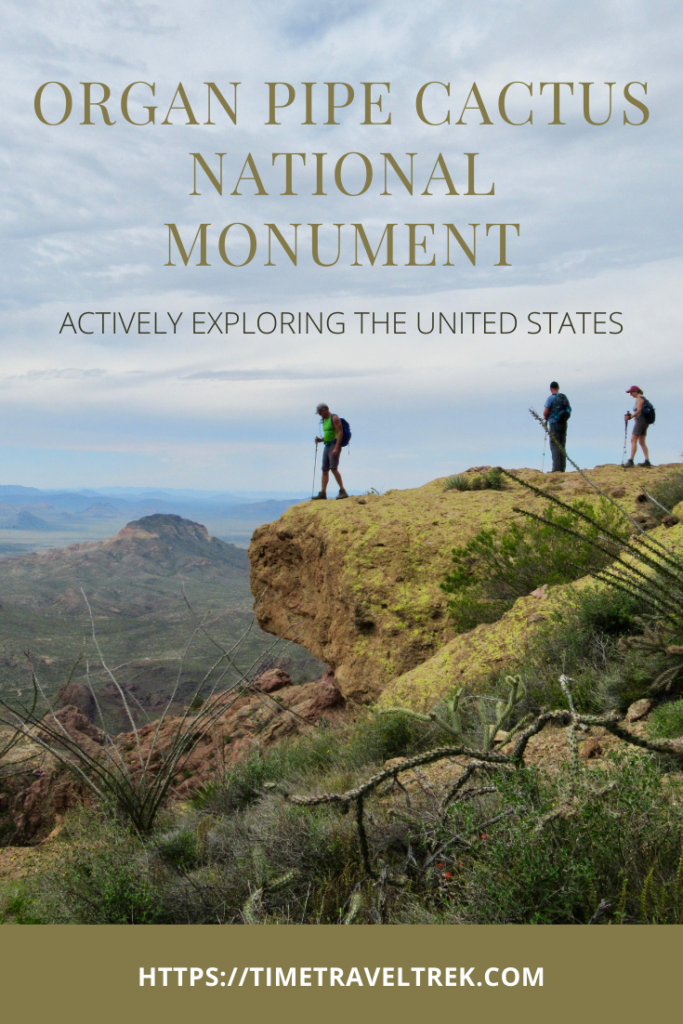
Table of Contents
Where in the World is Organ Pipe Cactus National Monument?
Organ Pipe Cactus National Monument is located in southern Arizona along the U.S./Mexico border. It is approximately 25 miles (40 km) south of Why, AZ or roughly a 2 – 2 ½ hour drive from Tucson. The Tohono O’odham Indian Reservation borders the park to the east. Cabeza Prieta National Wildlife Refuge lies to the west. This 517-square-mile (1339 sq km) park was set aside to preserve a relatively intact piece of the Sonoran Desert.
What’s in a Name?
The monument’s name comes from the large stands of Organ Pipe Cactus (Stenocereus thurberi). It grows in large stands throughout the monument. This is the only place in the United States with these large numbers of Organ Pipe Cactus. Organ Pipe Cactus National Monument preserves the northern-most habitat for this species.
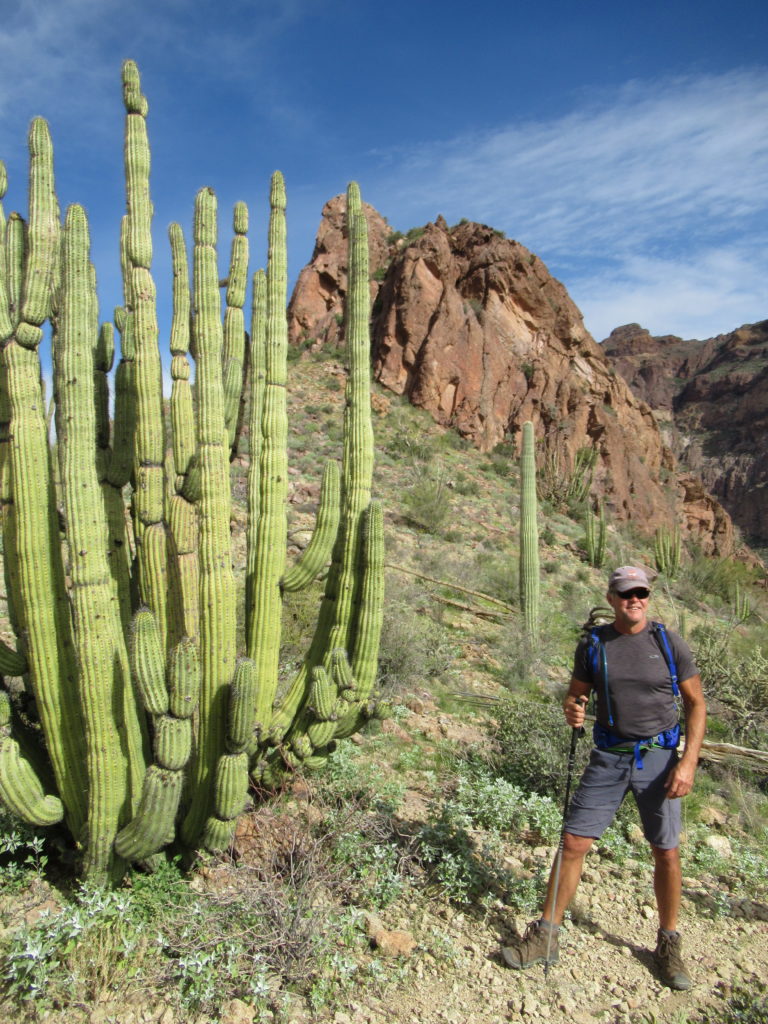
How Does Organ Pipe National Monument Differ from a National Park?
The United States National Parks service runs national monuments. Like national parks, they are federally protected land. Both national parks and national monuments share the goal of preserving and protecting natural and cultural resources. The major difference between a park and a monument is in their creation. A national park is established through an Act of Congress. It can include public and private land. A national monument is created through presidential proclamation. Lands for national monument can only come from existing federal lands. Organ Pipe Cactus National Monument was established by President Franklin D. Roosevelt in 1937.
UNESCO Biosphere Reserve
Yes, Organ Pipe Cactus National Monument is also the UNESCO Organ Pipe Cactus Biosphere Reserve. This designation helps conserve samples of the world’s ecosystems. It attracts scientists from around the world to conduct studies. As a result, this helps us better understand the unique qualities and challenges facing a particular area.
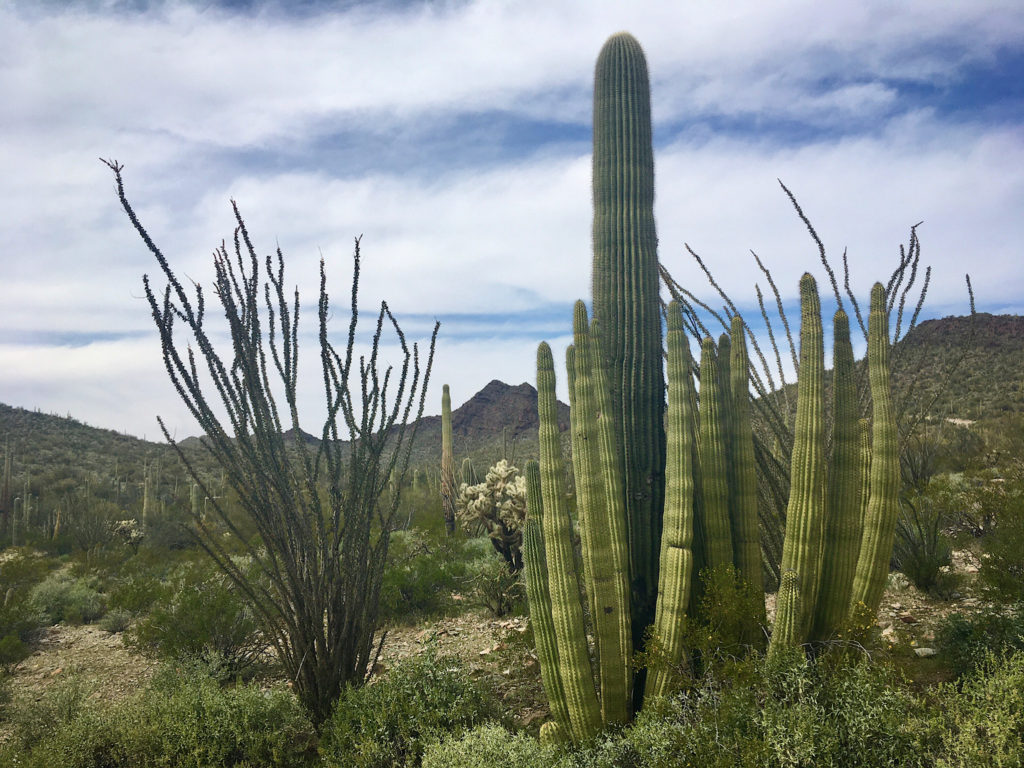
Organ Pipe Cactus Biosphere Reserve is an example of an intact Sonoran Desert ecosystem. The Sonoran Desert is an arid area which includes southwestern Arizona and southeastern California in the United States. Most of the Sonoran Desert though is in Mexico (Baja and Sonora).
Kris Eggle Visitor Center
When you arrive in the monument, your first stop will most likely be the Kris Eggle Visitor Center. The center is named after National Park Ranger Kris Eggle. He lost his life in the line of duty at Organ Pipe Cactus National Monument in 2002 while pursuing members of a Mexican drug cartel who crossed the border.
Is it safe?
It is one of the most common questions we are asked about our adventures near the U.S./Mexican border. For us – and another roughly ¼ million people who visited this monument each year – the question is not is it safe, rather what will we discover today? Illegal activity still occurs along the border, but it is unlikely you will see it. Border patrol and national park rangers were everywhere during our visit.
Facing Reality
Review the National Park Service safety page. Hike in daylight hours and, if possible, in groups. In other words, use common sense and keep aware of your surroundings. Actively exploring Organ Pipe Cactus National Monument offers a big, bold and beautiful taste of the Sonoran Desert ecosystem that will amaze and astound if you give it the chance. I like the words of Nelson Mandela: “May your choices reflect your hopes, not your fears.”
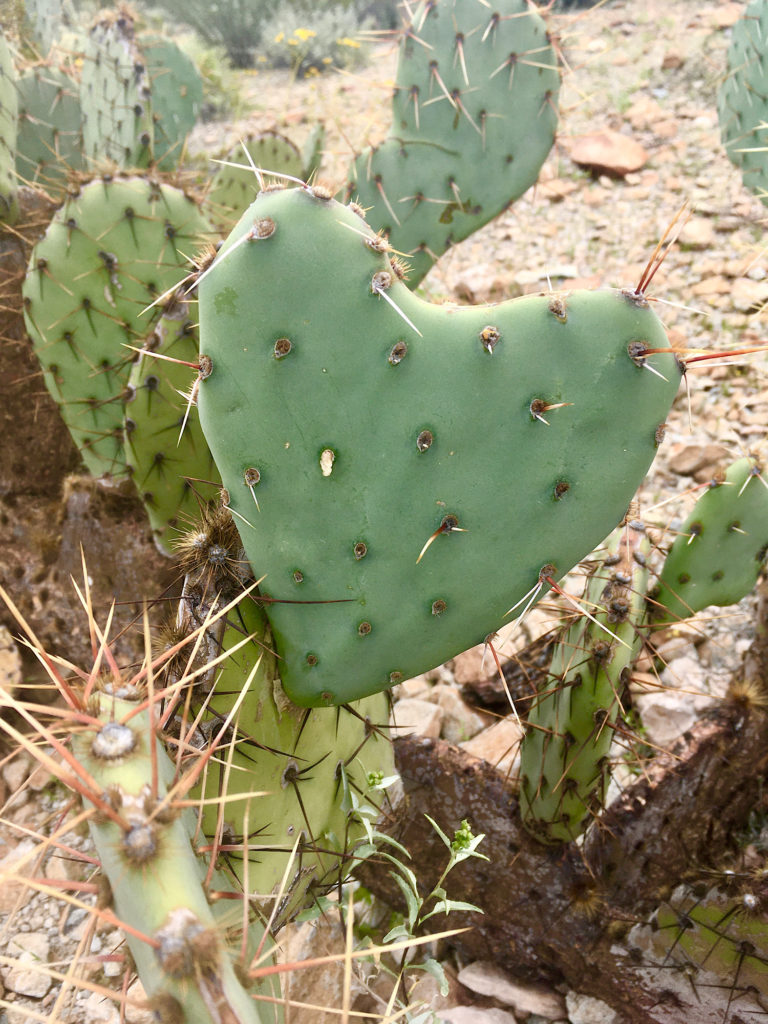
Actively Exploring Organ Pipe Cactus National Monument
People have been wandering foot paths across this area for thousands of years. Organ Pipe Cactus National Monument was on the Old Salt Trail. The Old Salt Trail was a prehistoric trade route for salt, obsidian and seashells. Spanish explorers wandered through in search of gold. Missionaries, miners and ranchers followed – and today tourists hike trails throughout the monument. Read on for a few monumental hikes – from short to strenuous!
A Couple Easy Strolls
After setting up camp and waiting for our friends to arrive, we wandered the perimeter trail. This easy loop (1 mi/1.6 km) encircles Twin Peaks Campground. It’s the perfect place to brush up your Sonoran Desert plant ID as many of the plants are marked with signs – jojoba, creosote bush, mesquite, rabbitbrush, ocotillo, cholla, prickly pear… the list goes on.
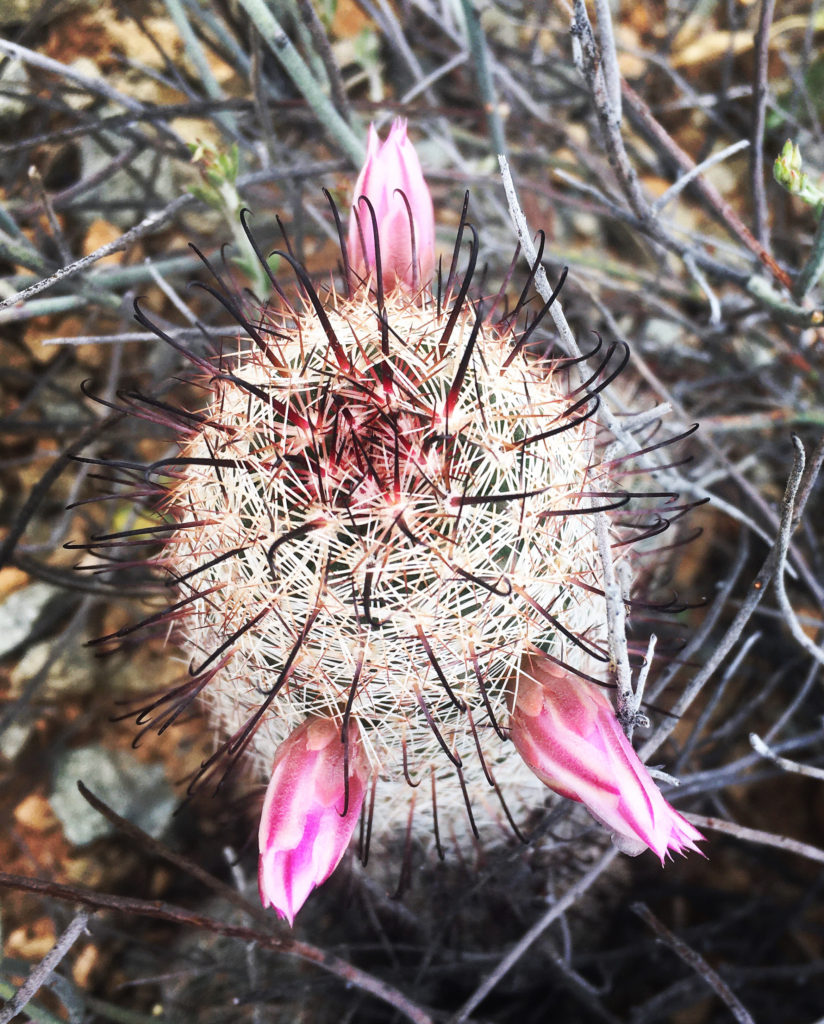
Going with a Guide
The following day, I convinced our group to sign up for a guided ranger tour to learn more about the ranching history in the park. With five other campers, we loaded up into the white parks van for the drive down to the Mexican border and the Gachado Line Camp. However, more time was spent talking about the “wall” than the history behind the small adobe line camp used by the Gray brothers during their ranching operations. Still, seeing the metal barrier was an eyeopener.
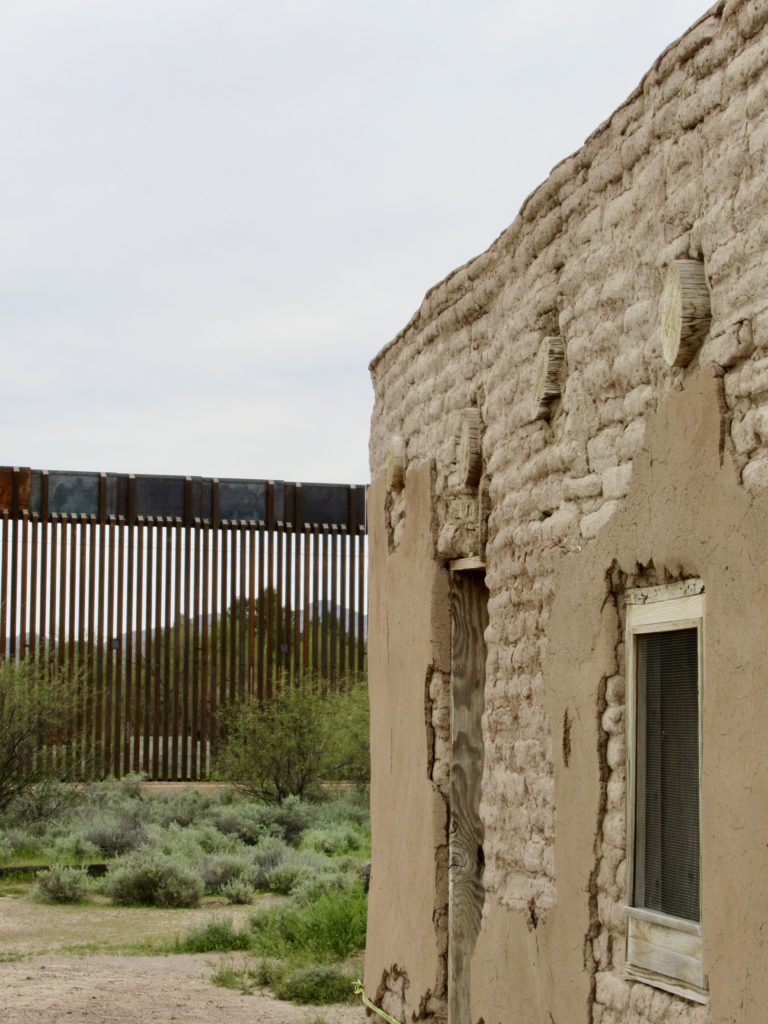
A Desert View
Later that afternoon we walked the Desert View Trail (1.2 mi/2 km). Leaving from the group camp trailhead, we climbed easily up to a low ridge overlooking the rolling desert. Cacti bloomed. Gila woodpeckers flew from saguaro to saguaro. Cactus wrens and northern mockingbirds sang out from palo verde trees. Late day sun warmed our faces. Without a doubt, this is the best time of day to appreciate the desert environment.
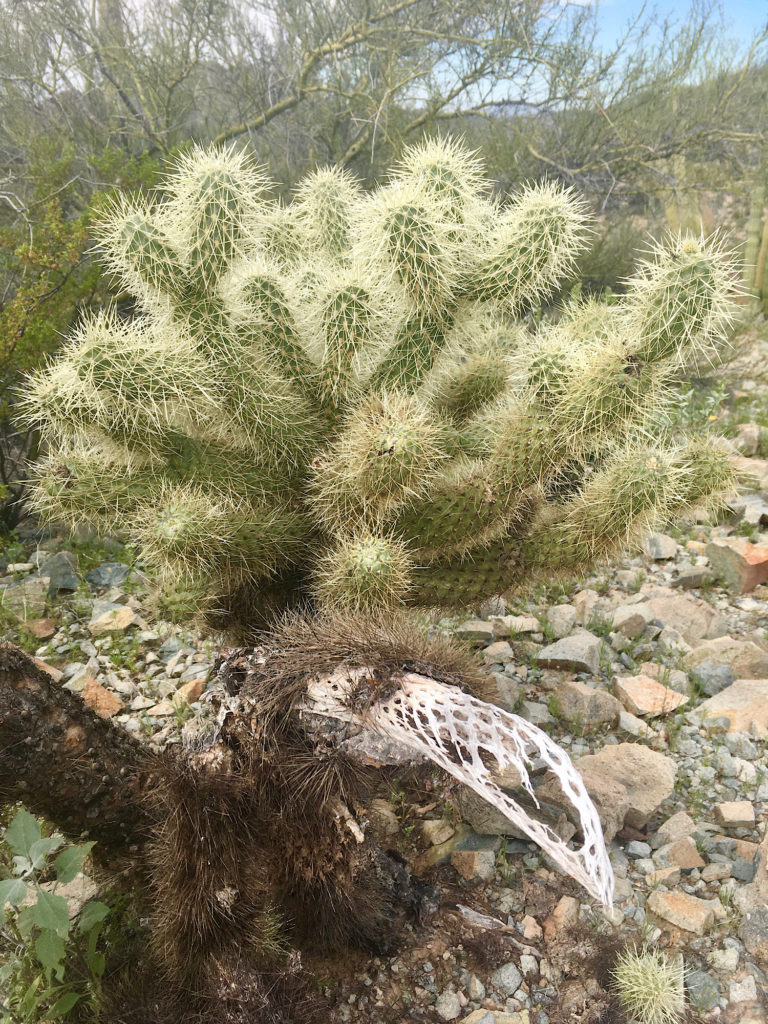
Stepping Up a Notch
From easy stroll to half-day hike, we decided to stretch our legs with a longer walk. Heading up the gravel North Puerto Blanco Drive from the Visitor Center, we parked at the Red Tanks Tinaja trailhead. It’s a 6.7-mile (10.8 km), one-way hike back to the campground – where we picked up our friend’s vehicle to shuttle back to our truck.
Get the gear from MEC before you go!
The trail starts off following a gravel wash. Chatting away, we kept looking for the “red rock tinaja” or large red rock vessels the water had carved into the rocks just past our trail junction. Not sure we ever found the namesake feature, but we still found beauty everywhere.
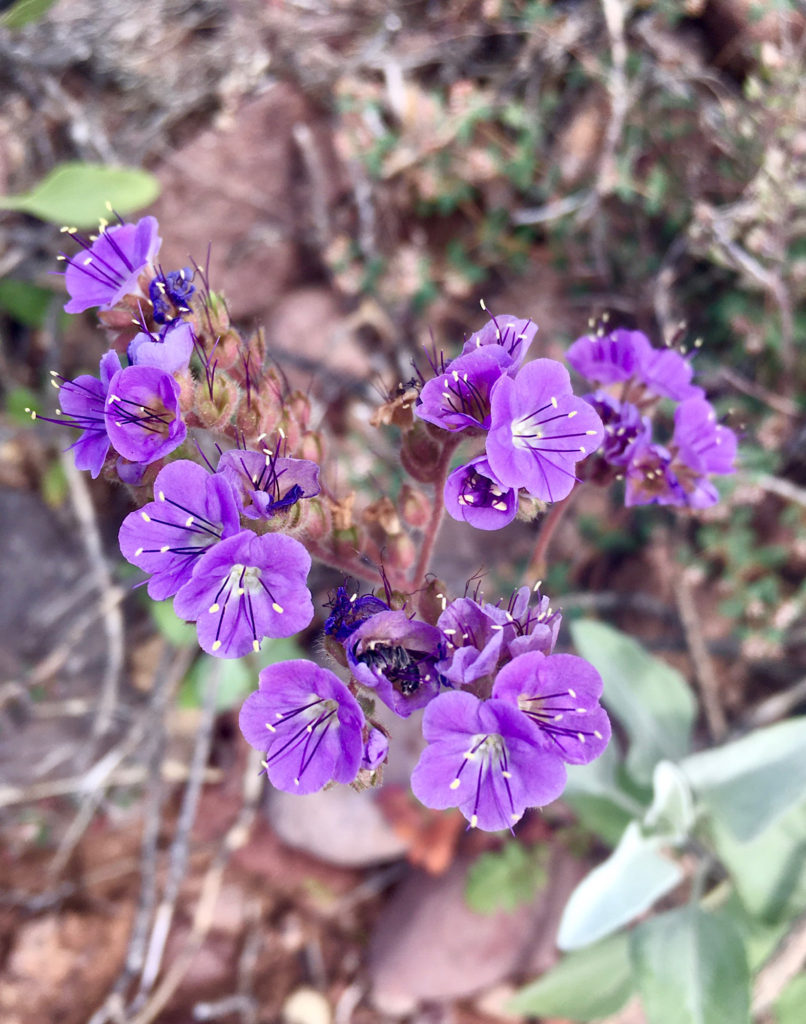
Climbing up a low pass, we wandered through the desert among forests of saguaro and organ pipe cactus before reaching Victoria Mine. In addition to ruins of an old stone building and rusting pieces of metal mining equipment, a few grated mine shafts littered the site.
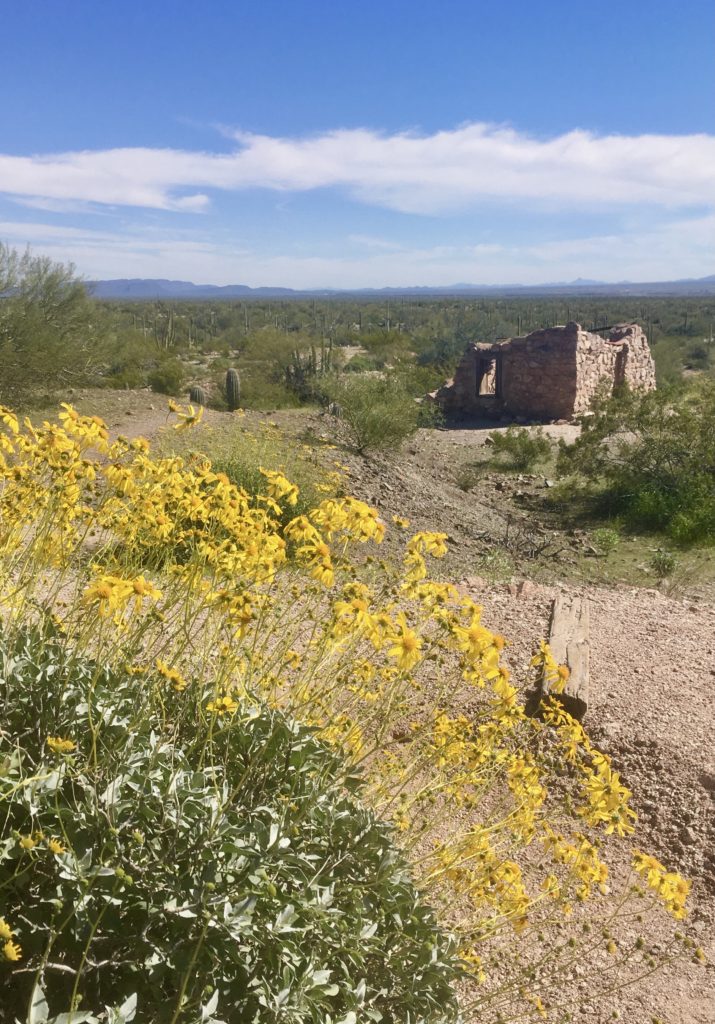
Mining History
Originally known as “La Americana”, the mine was opened by Cipriano Ortega in the 1880s. However, he sold the mine to Mikul Levy in 1899. Levey renamed the mine Victoria in honour of Victoria Leon, the wife of Levey’s storekeeper at Quitobaquito. Gold, silver, copper and other ores were taken out in sporadic mining efforts over the years. As a result, the mine is the oldest example of mining activity in the monument. It is also one of the oldest in southwestern Arizona. For a detailed overview of the historic mine, check out this report.
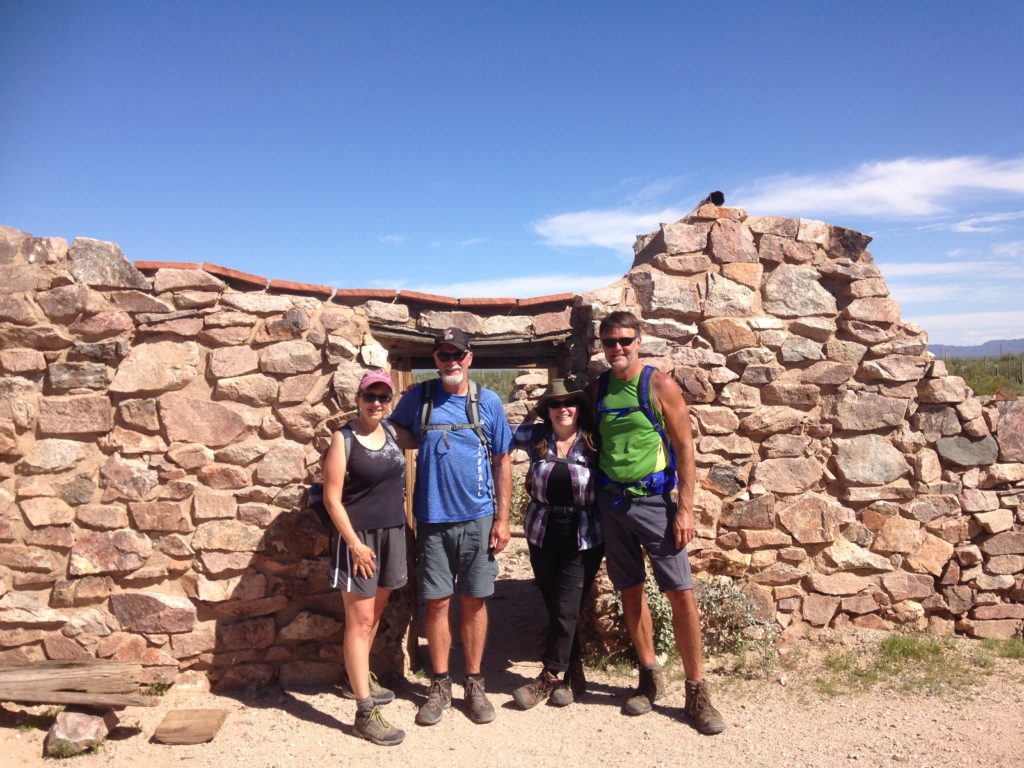
Mount Ajo Adventure
Go big or go home – sometimes we say that just for a challenge! For our final adventure in the monument, we chose to attempt a summit of Mount Ajo. Just shy of 5000 feet (1524 m) high, Mount Ajo is the tallest peak in Organ Pipe Cactus National Monument. The route starts out as a maintained trail until Bull Pasture. After that it is a rougher scramble. The hike is less than 8 ½ miles (13.5 km) return with roughly 2800 feet (850 m) of elevation gain.
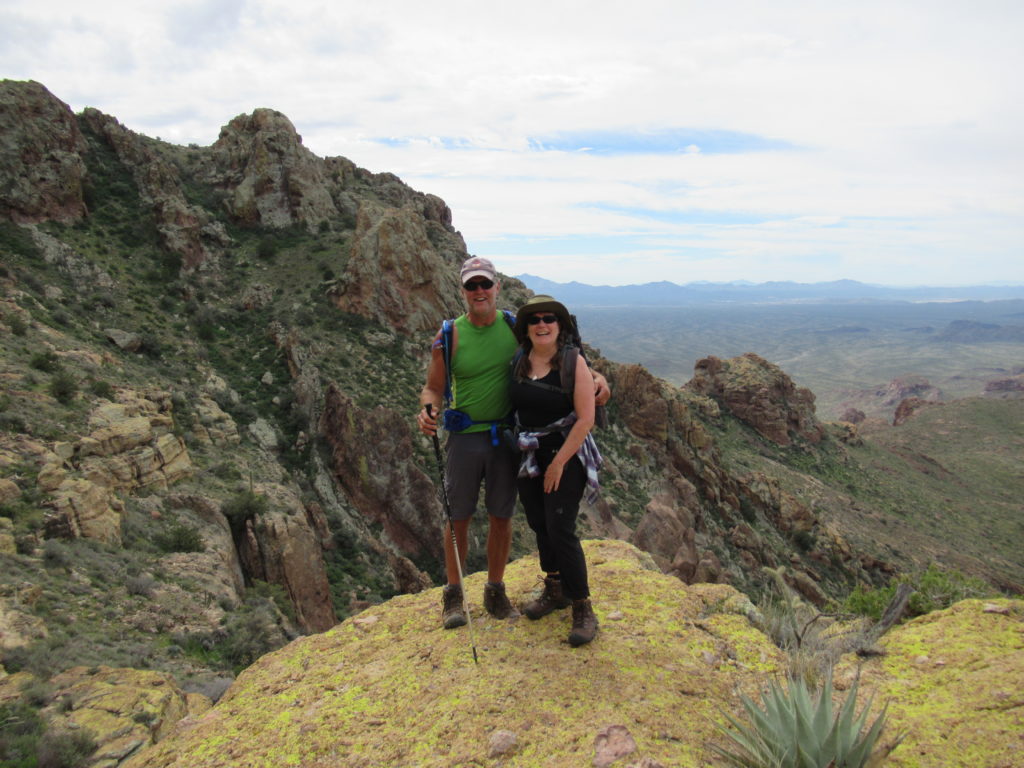
Let the Adventure Begin!
Hopping in our truck, we drove the Ajo Mountain Drive loop road to the Estes Canyon/Bull Pasture trailhead. After lacing up boots, slathering on sunscreen and adjusting hats and sunglasses, we loaded up daypacks and started up. And up and up we went. The grade got steeper and a little cliffy in places. We continued past Bull Pasture (1.5 mi/2.5 km) and onto the rougher route. Scrabbly rocks had us picking our foot placement with care. Overgrown cactus grabbed bare shins and arms. Still we kept smiling as the views switched from canyon to cliff to desert and mountain vistas. Volcanic rocks in shades of brown, red and yellow painted colourful pictures.
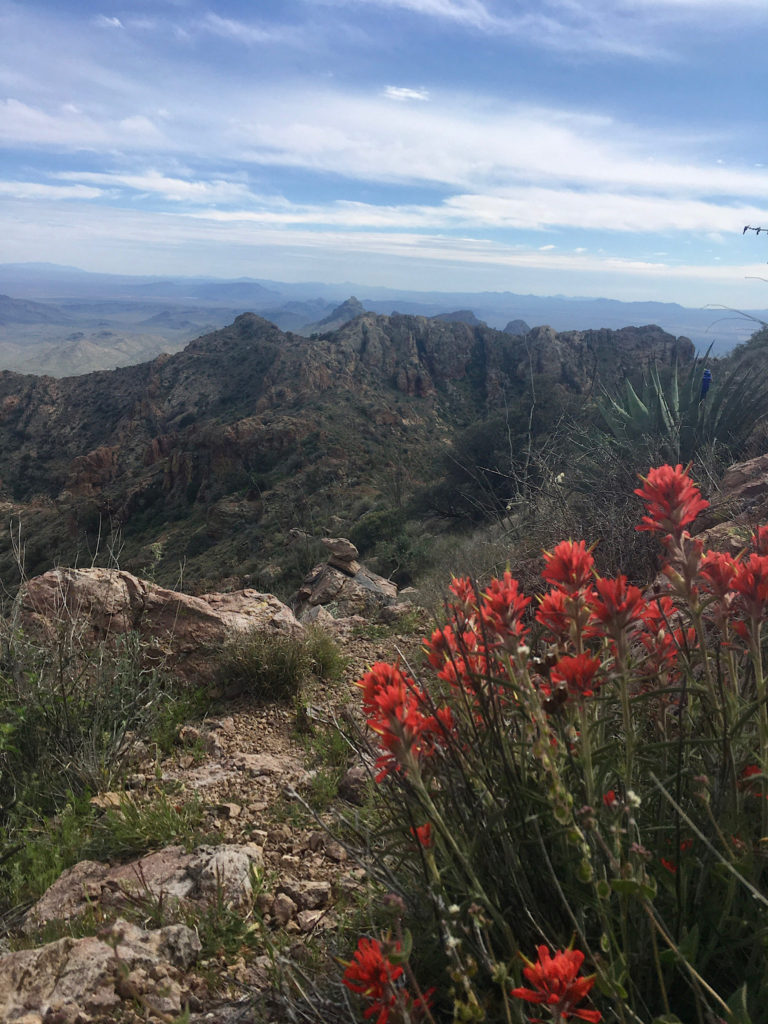
One Long Quad-Testing Day
Ten minutes shy of the actual summit a large flat rock beckoned for a rest and lunch. Only one of the four of us thought they could do without food at the moment. We snacked, rested and watched as Brad summited less than 10 minutes later. In the end, we were all happy with our choices.
It took almost as long going down as up with loose rock and looming cactus. We lost the trail at one point – and had to stop to get our bearings – but made it down with only a few scratches at the end of the day. Perhaps the best part of it all, our friends fell in love with Organ Pipe Cactus National Monument! We knew they would. Now, where should we take them next?
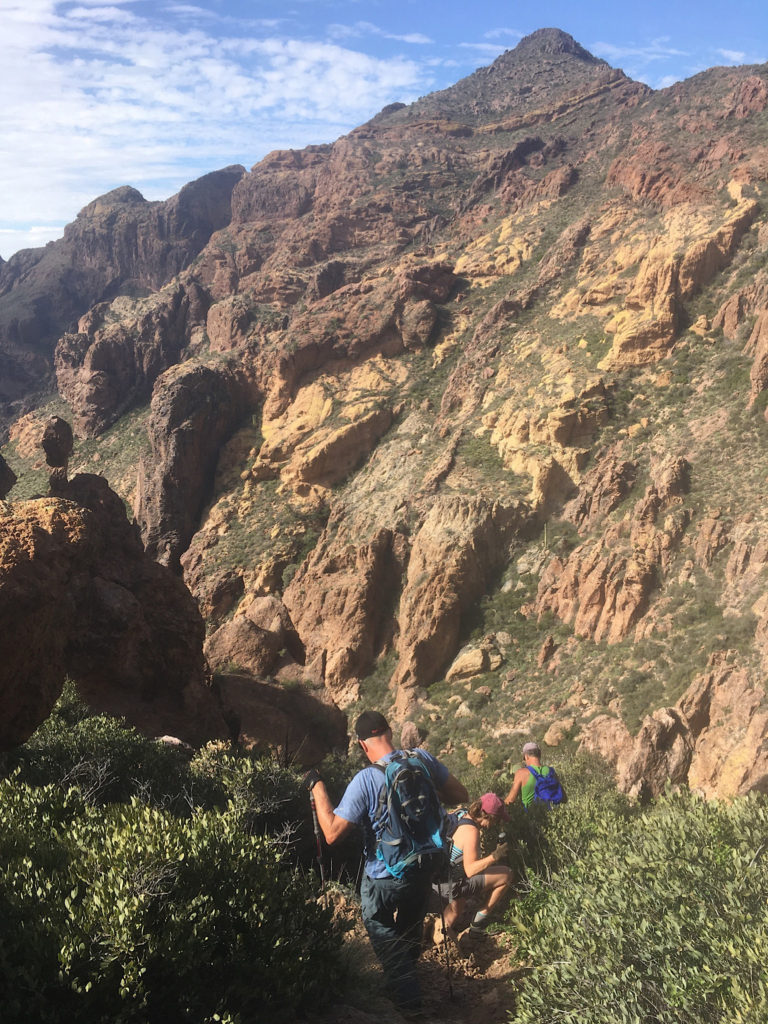
When You Go
Because you’ll want to get your bearings, start with this overview map of the monument.
Check here for a full list of hikes within Organ Pipe and be sure to read the sister post, Even More Hiking in Organ Pipe Cactus National Monument.
As campsites are limited, you will want to plan ahead. Twin Peaks Campground offers 24 tent-only sites and 174 RV sites (some of which can accommodate RVs up to 45’ long), no hookups. Camping $20/night. Advanced reservations required peak season (Jan-Mar). Alamo Campground has only 4 sites, no trailers or motorhomes allowed. Visit Recreation.gov or call 1-877-444-6777. Be sure to read notifications for current restrictions and/or closures.
Looking for Other Ideas for Active Outdoor Adventures in Arizona?
Free Camping in Arizona: Saddle Mountain
Review: Arizona’s White Tank Regional Park
Exploring Chiracahua National Monument




Wow, wonderful places, certainly would love to be there…unfortunately away thousands of KM…
Great write up and pics.
Keep it up!
ji!
Thanks for you kind words Ji!
I have never heard of this place and it’s not even that far from my state. This sounds like such a fun adventure to embark on. I am definitely adding it to the list of US road trips now. Thank you for sharing!
You’re welcome. Be sure to let us know how your trip goes when you do make it to Organ Pipe Cactus National Monument!
So neat! Didn’t even know about this park, what a cool spot! Thanks so much for sharing!
It is a cool spot – like so many places in the American Southwest!
Quite a collection of place to visit. Thanks for the ideas
You’re welcome!
Yes, where are we going next??
R and M
We have a plan – will discuss next time we’re together in person!